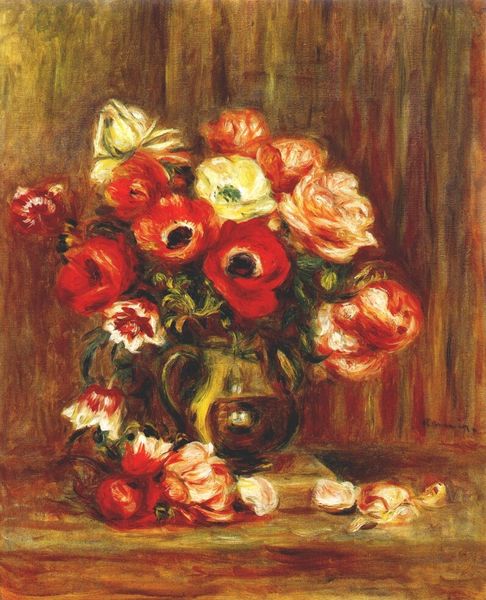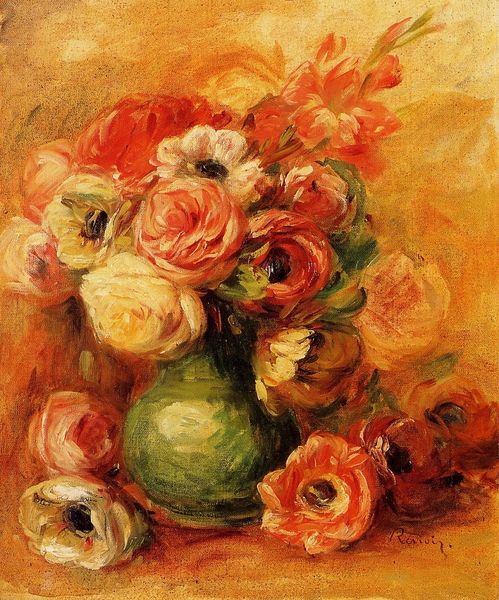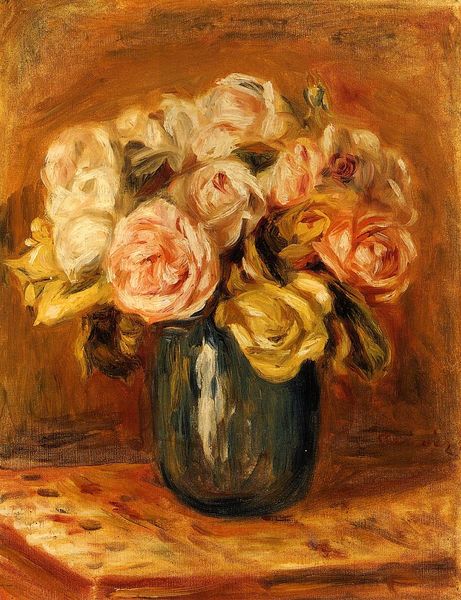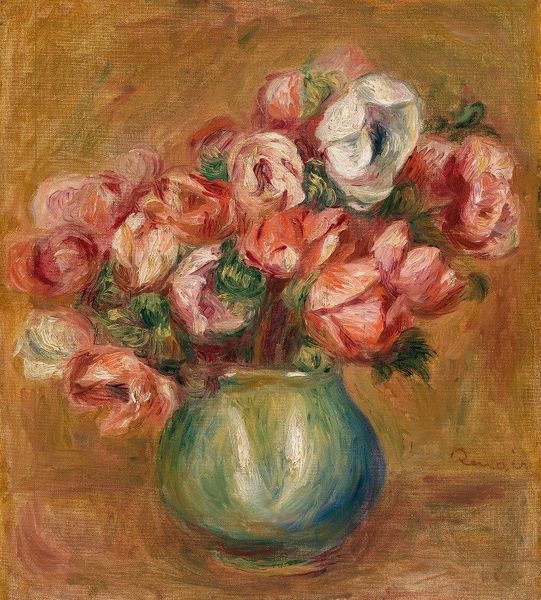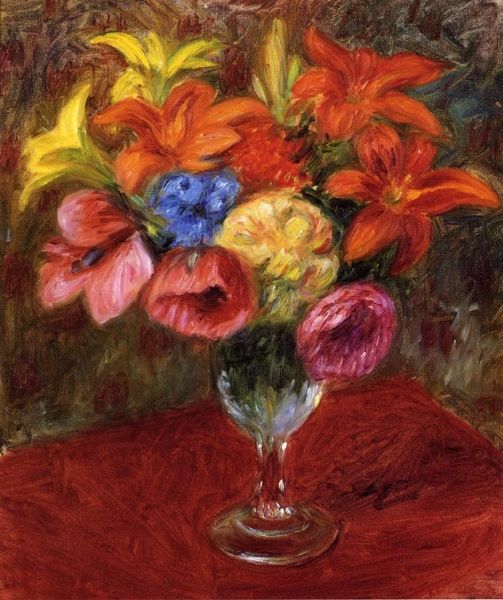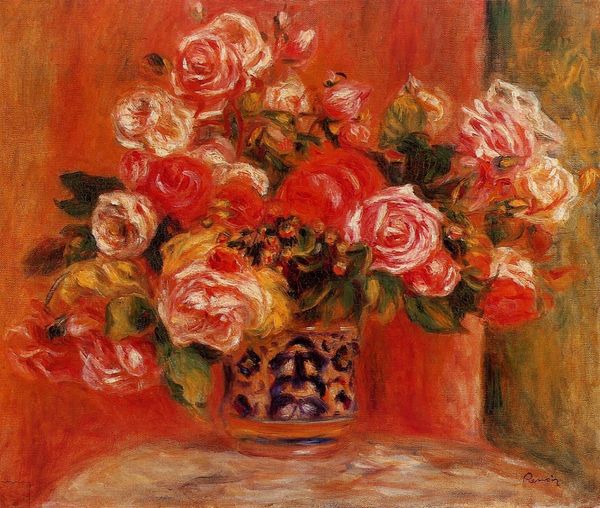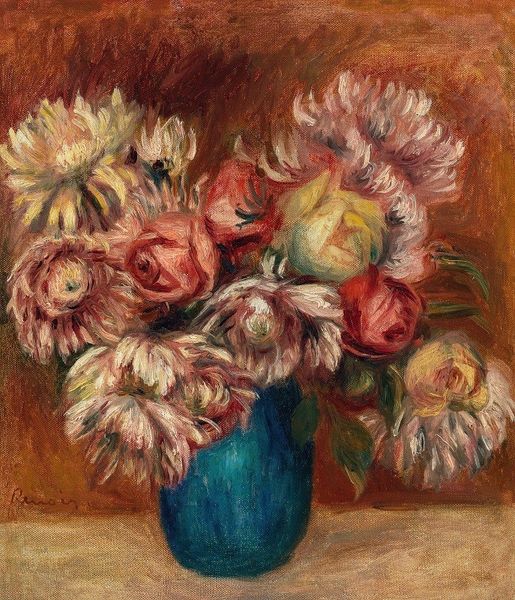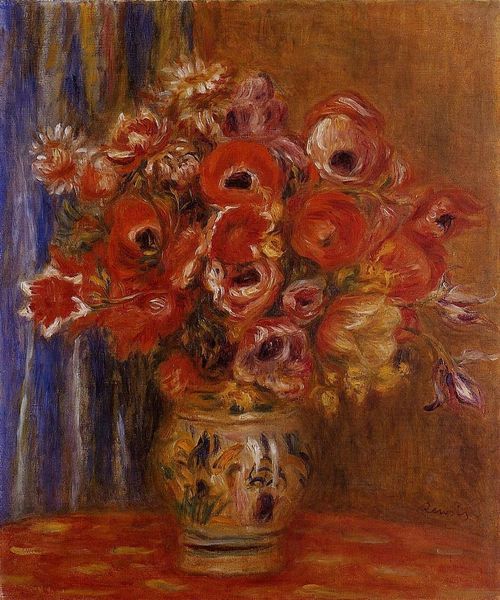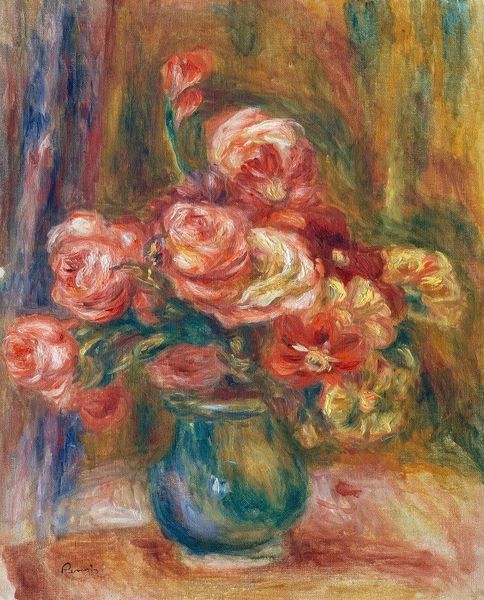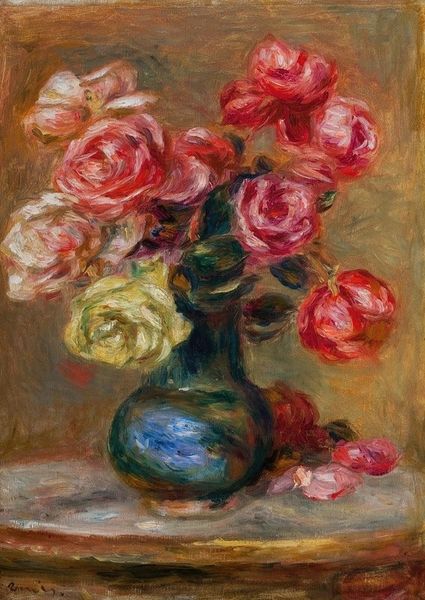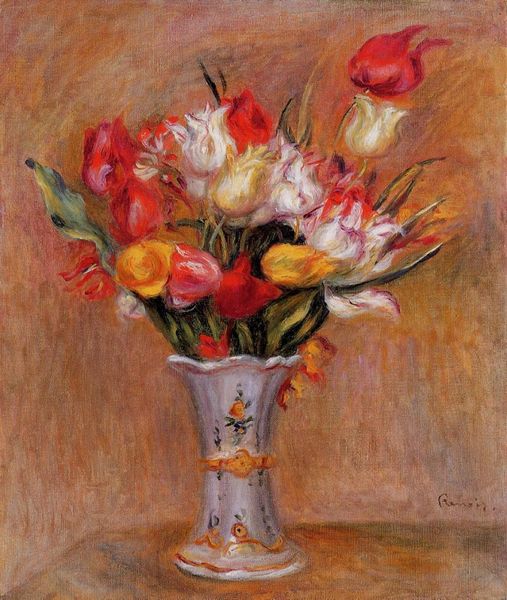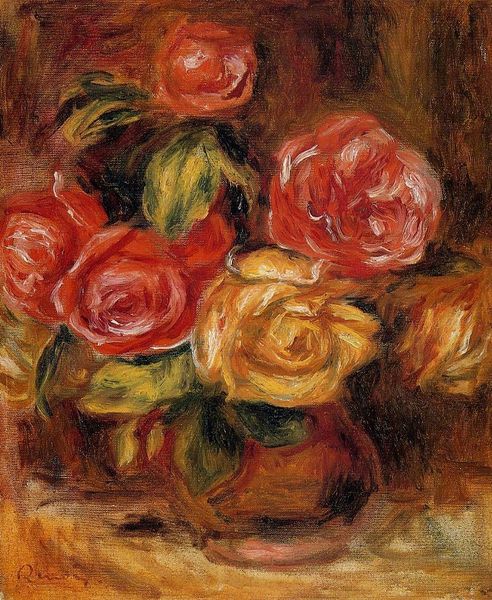
Copyright: Public domain
Curator: Looking at Renoir’s “Anemones,” painted in 1909, one is immediately struck by the vibrant energy captured on canvas. The oil paint, applied with such a luscious and almost tactile quality, speaks volumes. Editor: My initial feeling is one of warmth. The color palette is so rich, almost overwhelmingly so. You can practically feel the plushness of the petals, but it feels...manufactured, doesn't it? This kind of idealisation was becoming a commodity, wasn't it? Curator: Absolutely. Renoir, in his later years, became a master of conveying that luxurious aesthetic that the Parisian bourgeoisie so keenly desired. He provides access to imagery that helped reinforce certain class positions. Note how the choice of anemones as opposed to, say, humble wildflowers, lends itself to an air of sophistication. The production, the marketing of paintings like this as items for aspirational luxury, shaped artistic direction just as much as the artistic intent. Editor: And the object itself… that vase, what would have been involved in its manufacture? This isn't simply a scene plucked from nature; it's constructed from many complex parts. I'm thinking about the labor, the processes that allowed the privileged to surround themselves with these refined objects—each manufactured piece in play. Curator: Exactly, consider the rising popularity of decorative arts and interior design during this period. Art wasn’t just displayed in grand salons; it played an intimate role in domestic spaces. The rising middle class, inspired by the aristocracy, consumed artwork not just as a statement, but as an indicator of their taste and social climbing—fueling Renoir's production. Editor: What gets me is this intense focus on beauty, abstracted from real labor and context. He makes the subject itself feel like a kind of industry – prettified, commodified... distant from material concerns. Even if it is beautiful, this artwork feels unsettling because of the socio-political forces at play. Curator: Well, it seems he really captured the essence of that gilded age we talk so much about. From these vibrant flowers and his characteristic brushstrokes to the careful framing, it certainly gives one insight to Renoir’s audience and social commentary in late 19th century French painting. Editor: Perhaps... for me, it underscores how much the business of art shapes perception. And it also demonstrates the complex role played by artists of his caliber in constructing an era of cultural aspiration.
Comments
No comments
Be the first to comment and join the conversation on the ultimate creative platform.
